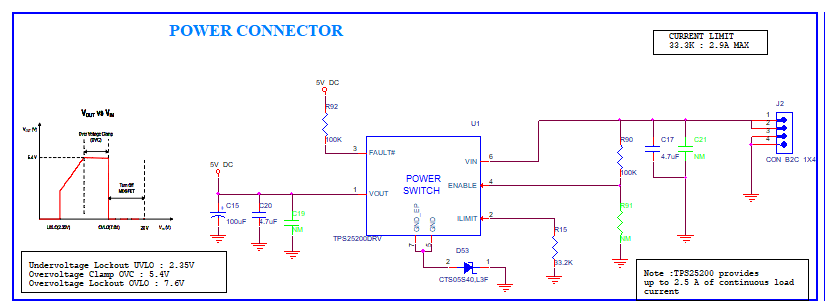Other Parts Discussed in Thread: TPS2500, , TLV62585
Hello Team ,
We are planing to use TPS2500 IC in our board for over voltage and over current protection.
But we need a reverse voltage protection with this IC .
We are planing to use diode on Enable pin that will disable this IC in reverse voltage
But this will protect the Vin pin or not is a issue
Please share if you have any another solution for reverse voltage.
Use attached image for your reference.








